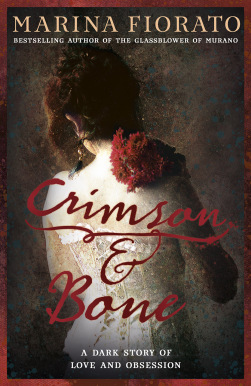
A remarkable event occurred this week; an international treasure celebrated her birthday. This incredible woman is none other than Betty White. With the seven decades of work Betty White has contributed to the entertainment world and her lifelong pursuit of protecting animal rights, Betty has given incalculable amounts of laughter and love to the entire global community and animal kingdoms. She is probably best known for her work in the NBC series The Golden Girls, a comedy that’s legacy will live on forever because it remains relevant thirty years after its initial airing date and likely will be for many decades to come.
For my readers who’ve been around a while, you may recall the posts I did a few years back about the Girls and their impacts on society. I mentioned in those posts that I’d like to eventually pursue a full length book, an in-depth analysis of the program and the social issues that the creators boldly touched when no one else would. With Betty White’s 96th birthday, I’ve decided to publish, via the Reading Escape, the second edition of those posts week by week. A bit of work has been done to them and I would LOVE to flesh out the rest of the ideas that I have. If you think I’m on to something, leave me a note! I’d really appreciate your feedback prior to submitting this Golden tribute to the Golden Girls (playing around with that as the title).
If you’re reading this, Betty White, may you have another glorious, golden year ahead, filled with nothing but laughter, hot dogs, and vodka! You get ’em girl!
Enjoy!
A Golden Tribute to the Golden GirlsBy S. Faxon
Introduction
The potato salad and the Deviled-Egg serving dish were out on the counter. That could only mean one thing – we were going to Ruth’s house. Every second Wednesday of the month promised a ritual that had been maintained religiously by the ladies on the Hill since World War II, at least, that’s how the legend was told. Rain or shine, (with shine being the far more likely) every second Wednesday of the month, for as far back as I could remember, I would walk up the street with my grandma to the pretty pink house on the left hand of the street. That was where we all convened.
We did not use the front door, for what sense would that make? Instead, we used the tall white gate that enclosed the breeze way to enter Ruth’s home. We didn’t go inside though. We walked down the cool covered breezeway, down the first flight of concrete steps, across the yard, passing the concreted area where empty clothes lines were hung, and down a few more steps to the magical place, the enclosed patio. A green screen wooden door would swing open into a small mud room. The conversations that we could hear rolling out from the patio welcomed us with the familiar smells of potluck delicacies. The ladies already inside would help one another unburden their arms full of plates and trays. Laughter was instant and the feeling of community, of neighbors, of family welcomed us with warm smiles and the promise of home cooked food.
Once inside and our dishes out on display, Grandma and I would claim our positions at the table. Grandma always sat at the right hand of Ruth, the leader of the ladies, who was positioned accordingly at the head of the table. Doris, Ruth’s sister-in-law would sit to her left. I sat to the right of grandma. My grandma’s dear friend Evelyn would usually sit across from me, then Hannah, in her beautiful outfits and gorgeous jewelry, would sit to my right. We’d all wait patiently chatting or arranging our foods on the long counter, the outdoor stove and the red-brick fireplace, typical of older homes in San Diego, until the familiar “cling, cling, cling” of Ruth’s knife to the glass or the silver bell would sing. We’d all quiet down for Ruth to lead the prayer, “Bless us, oh Lord, give us this day our daily bread…” Then we’d pick up our plates and hop in line. We’d visit and visit, scoop up potato salad, beans, coleslaw, chicken and then help ourselves to tea or water, which were on the table in a variety of different shaped and colored pitchers.
Once we were all settled we’d eat from our paper plates and visit some more. At some point during the meal, Ruth would ring her bell again and stand to give the neighborhood announcements. Usually this would include reading these new fangled email chain letters that one of the advanced-tech ladies on the hill would provide. Being that I was just a young’un I’d usually excuse myself to go and play in the little fairy garden that was a partially enclosed extension of the community’s center. I remember the little garden being filled with ferns. There were three concrete steps that led into this sacred place, a refuge for a child to play with her sister’s cat, who followed her closely, or to chase away the mean feral that we knew on the hill as Grey Cat.
To an outsider, a non-hill resident, this gaggle of gals looked like nothing more than a bunch of grandmas convening to discuss knitting patterns and to communally babysit some curly-haired kid, but it was so much more than that. This was where the women went to talk about their families, their homes, their plans, and most importantly their lives.
The Widow’s, or the “Widda’s” luncheon, as my grandma would say, was wonderfully shaping for me. It was under their guidance and at these luncheons that I learned how to be a lady. I also learned that there was more to ladies than purses and lipstick. One thing that I appreciated even then was that the ladies never really censored themselves when I was around. They told their crass jokes and gossiped around me like I was one of them, and I was the luckiest kid in the world; I had more grandma figures than anyone! But I didn’t look at them like that – they were my dear neighbors and friends, extensions of my family and home. As an adult, I cannot describe how much I miss that feeling of community.
It’s of little wonder then that I took to liking NBC’s sitcom The Golden Girls. In my formative years, I hadn’t seen a single episode of The Golden Girls until one afternoon, probably a year after my grandmother passed away, at my best friend Victoria’s house. We were probably seventeen and I remember I was standing on one side of the breakfast bar in her kitchen. It was a bright, San Diego afternoon and this funny show was on about these four older ladies living together in Miami. My seventeen-year-old self asked Victoria, “What is this show?”
“You don’t know the Golden Girls?!” she replied, unable to believe that I was in the dark. After we established that I had absolutely no familiarity with it, Victoria sat me down on the couch, prepared some popcorn and said, “Trust me. You’re going to like it.”
And that was it. I was hooked.
The more I watched, the more I fell in love with the stories, the lessons, the comedy and, of course, the ladies. Blanch, Rose, Dorothy and Sophia were concentrations of the ladies I knew as a child, all thirty or so of my neighbors who would show every second Wednesday of the month around those four tables held together by mix-matched plastic tablecloths. While my family had left that blessed neighborhood on the hill and while I hadn’t seen any of the girls I knew and loved for years, every time I see an episode of The Golden Girls, I feel like I’m home again and that’s a feeling worth sharing.
Now just like those ladies on the hill, the golden girls represented more than met the eye. When the sitcom was first aired, no one expected the hit that it would come. We laughed with them, sometimes we, “laughed ‘till we peed”, to quote the great Sophia Petrillo. We cried with them. We felt their hurts and tackled with them the struggles of the day. The issues that arose on the show are as relevant today as they were in the eighties, right down to Rose’s letter to Gorbachev. What the golden girls left us was more than a few laughs; they taught us that it’s okay to grow old, that previous social taboos, having a sex life after your spouse dies, being around people with AIDs, and countless other faux pas, can be addressed head on. These are all issues that this blog will cover in the weeks to follow.
This project started when one of my sisters sent me a link to an article regarding an analysis of the Mary Tyler Moore show. The article discussed the residual impact of the sitcom on viewers and its influence on social norms. My sister sent me the link with this simple comment: “You could do this with the ‘Golden Girls!’ No one knows them better than you.”
When I first started this journey through my original blog, The Weekly Read, I had not claimed to be the number one fan, still don’t, but I have always deeply respected and admired the messages within the show and the strength of their characters. When I was a professor at St. John’s University, I considered proposing to instruct a semester long college course on the ‘Politics of the Golden Girls,’ so this project struck me as a positive first step toward achieving this goal and it continues to do so today.
Whether you are interested, but not familiar with the sitcom that aired in 1984, or if the girls are dear friends, sit back, relax, and in the words of Sophia, “Fasten your seat belt slut puppy, this ain’t going to be no cakewalk.” While that’s probably not the case for all of you, the posts in the weeks to follow will be discussing social issues that were controversial at the time of the show’s running life and that remain pressing relevant issues to-date. So curl up, grab a cup of coffee, and maybe even, dare I say it, a slice of cheesecake as we prepare to dive into the legacies that these four ladies and the creators of the program left behind.
We’ll see you next week, dear readers, with our first look back at Blanche Elizabeth Devereaux who’s, as Dorothy realized, initials spell “BED.”
Your humble author,
S. Faxon
Share this:




